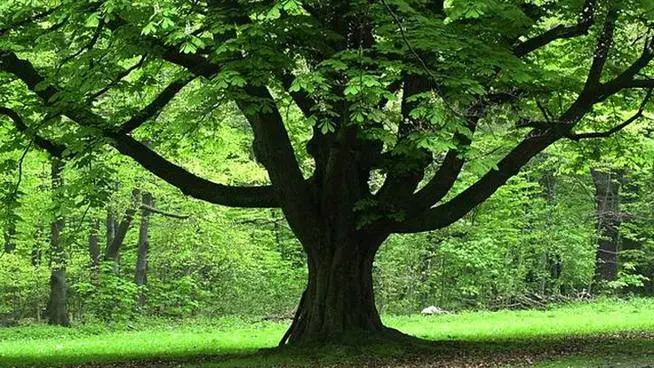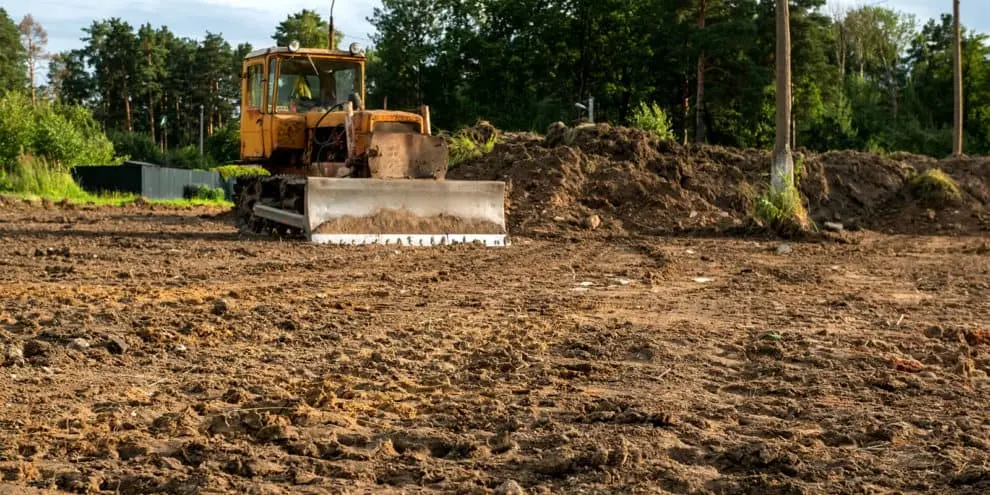Tree Timing Essentials: Safety and Tools
Before anything else, safety should always come first while pruning trees. Having the correct tools and realizing how vital safety is may help anyone, even if they're not a trained arborist, avoid mishaps and guarantee a satisfactory trimming experience.
Importance of Safety in Tree Trimming
Tree trimming can be hazardous if not done correctly. Falling branches, unstable trees, and electrical wires pose serious risks. You can protect yourself, your property, and others from harm by prioritizing safety. Safety measures include wearing protective gear like helmets, gloves, and goggles, ensuring a clear work area, and using proper techniques to avoid accidents.
Essential Tools for Tree Trimming
Having the right tools is essential for safe and effective tree trimming. Some must-have tools include:
1. Pruning shears: Used to clip tiny twigs and branches neatly.
2. Loppers: Ideal for cutting thicker branches out of reach.
3. Hand Saw: For cutting branches too large for pruning shears or loppers.
4. Pole Saw: You can trim high branches without climbing trees.
5. Safety Harness: Essential for working at heights to prevent falls.
6. Rope and Pulley System: Helps control the direction of falling branches.
7. Chainsaw: Useful for larger branches and tree removal but requires proper training and safety precautions.
8. First Aid Kit: Always have one in case of accidents or injuries.
Essential Safety Gear for Tree Work: Protecting Yourself with PPE and Guidelines
Safety Gear:
When it comes to tree work, wearing the proper safety gear is non-negotiable. From head to toe, personal protective equipment (PPE) is your shield against potential hazards. Coupled with appropriate safety guidelines and practices, it ensures a secure environment for tree trimming and maintenance tasks.
Personal Protective Equipment (PPE):
1. Helmet: Protects your head from falling branches and impacts.
2. Gloves: Shields your hands from cuts, blisters, and splinters.
3. Eye Protection: Goggles or safety glasses prevent debris from injuring your eyes.
4. Ear Protection: Earplugs or earmuffs reduce the risk of hearing damage from loud machinery.
5. Chainsaw Chaps: Specialized pants with layers of protective fabric to prevent chainsaw leg injuries.
6. Safety Boots: Steel-toed boots offer protection against sharp items and heavy machinery while offering traction.
Safety Guidelines and Practices:
1. Assess the Work Area: Identify potential hazards such as power lines, uneven terrain, or weak branches.
2. Use Proper Techniques: Employ correct cutting methods and equipment operation to minimize risks.
3. Maintain Distance: Keep bystanders away from the work area to prevent accidents.
4. Work in Pairs: Have a buddy system for assistance and safety monitoring.
5. Stay Sober: Never engage in tree work under the influence of alcohol or drugs.
6. Take Breaks: Prevent fatigue-related accidents by taking regular breaks and staying hydrated.
7. Emergency Preparedness: Have a first aid kit and know how to respond to emergencies.
Safety gear such as PPE and adherence to safety guidelines are vital for mitigating risks during tree work. Prioritizing safety ensures a secure environment for professionals and DIY enthusiasts, promoting accident-free and successful tree maintenance endeavors.
Tree Assessment: Identifying Hazards and Ensuring Stability
Tree Assessment:
A complete examination must be carried out before beginning any tree-related activity to identify potential threats and assure the health and stability of the tree. By understanding the risks and condition of the tree, you can take necessary precautions and make informed decisions to maintain safety.
Identifying Potential Hazards:
1. Dead or Diseased Branches: Look for branches that show signs of decay, discoloration, or lack of foliage, as they are prone to falling and can cause injury or property damage.
2. Leaning Trees: Trees that lean excessively may indicate root issues or structural instability, increasing the risk of toppling over.
3. Overhanging Branches: Branches hanging over structures, pathways, or power lines pose a risk of falling and causing damage or injury.
4. Weak Branch Unions: Forked branches with narrow angles of attachment are susceptible to splitting, especially during storms or strong winds.
5. Presence of Wildlife: Be aware of nests or habitats of wildlife, such as birds or insects, as disturbing them can lead to defensive behaviors and potential hazards.
Assessing Tree Health and Stability:
1. Foliage Inspection: Evaluate the density and color of the leaves to determine the tree's overall health and vitality.
2. Trunk Examination: Look for signs of decay, cracks, or cavities on the trunk, which may indicate structural weakness.
3. Root Assessment: Check for root damage, soil erosion, or girdling roots that can compromise the tree's stability.
4. Stability Testing: Conduct gentle pushes or pulls on the trunk to assess its stability and anchorage in the soil.
Thorough tree assessment involves identifying potential hazards and evaluating the tree's health and stability. Being proactive and observant can mitigate risks and ensure a safer environment for tree maintenance activities.
Techniques for Controlled Tree Felling
1. Directional Cutting: Strategic cutting techniques used to guide the direction of tree fall by creating hinge wood and controlling the angle of the notch.
2. Backcutting: Make a precise cut on the opposite side of the notch to create a hinge and control the direction of tree fall.
3. Wedge Placement: Inserting wedges into the backcourt prevents the tree from settling or pinching the saw blade, facilitating controlled descent.
4. Tensioning Lines: Rigging ropes apply tension to the tree and guide its descent, ensuring a safe and controlled fall away from obstacles.
Using proper rigging equipment and techniques allows tree removal operations to be conducted safely and efficiently, minimizing risks and ensuring successful outcomes.
Be Prepared: Emergency Response and First Aid for Tree Work
Emergency Preparedness:
It is imperative to have emergency plans in place when working on trees to protect yourself and others. Promptly responding to accidents and injuries can significantly prevent additional injury and aid in the healing process.

Responding to Accidents and Injuries:
1. Remain Calm: You must maintain your composure to properly assess the situation and offer assistance following an accident or injury.
2. Secure the Area: If possible, secure the area to prevent further accidents or injuries by clearing bystanders and potential hazards.
3. Assess the Injury: Evaluate the severity of the injury and administer appropriate first aid while awaiting medical assistance.
4. Call for Help: If the injury is severe or requires medical attention, call emergency services immediately to ensure prompt assistance.
5. Provide Comfort: Offer reassurance and support to the injured person while waiting for help to arrive, maintaining a calm and comforting presence.
Emergency First Aid Procedures:
1. Bleeding: Use a clean towel or bandage to apply direct pressure to the wound to halt the bleeding. As much as possible, raise the affected area.
2. Fractures: Immobilize the injured limb using a splint or improvised materials to prevent further movement and minimize pain.
3. Burns: Cool the burn with cold water or a damp cloth to alleviate pain and reduce swelling.
4. Shock: Keep the injured individual warm and restrained with their legs raised to enhance blood flow and lower the danger of shock.
5. CPR: If necessary, administer cardiopulmonary resuscitation (CPR) to a person who is unresponsive and not breathing until medical help arrives.
When working on trees, you can guarantee everyone's safety and well-being by anticipating emergencies and understanding how to react appropriately.
FAQs
1. What safety gear is essential for tree trimming?
Safety gear for tree trimming includes a helmet, gloves, eye protection, ear protection, chainsaw chaps, safety boots, and a safety harness.
2. How often should tree-cutting tools be maintained?
Tree-cutting tools should be cleaned after each use to prevent corrosion and sharpened regularly to ensure clean and efficient cuts. Additionally, check for wear and damage to parts and replace them as needed.
3. What are the essential techniques for safe tree climbing?
Critical techniques for safe tree climbing include using a proper climbing harness, maintaining three points of contact with the tree or climbing rope, testing holds before applying weight, and communicating with spotters.
4. How can I assess the health and stability of a tree?
Examining a tree's leaves, trunk, and roots for indications of disease, decay, or structural problems is part of determining its stability and health. One way to assess trunk stability is to gently push or tug on it.
5. What should I do in an emergency during tree work?
In an emergency during tree work, stay calm, secure the area, assess the injury, and provide appropriate first aid while waiting for medical assistance. Call emergency services if the injury is severe or requires medical attention.
Conclusion
Mastering the art of tree work requires proper techniques, safety measures, and the right equipment. Whether trimming branches, climbing trees, or removing a tree altogether, prioritizing safety and following best practices is essential for success. Understanding the importance of safety gear, tree assessment, cutting tools, rigging equipment, and emergency preparedness can ensure a safer and more efficient tree work experience while minimizing risks and promoting wellbeing.
Are you prepared to take on your subsequent tree care or trimming project? Assemble the skills and equipment required for safe and efficient tree work. Prioritize safety above everything else, purchase high-quality equipment, and keep up with industry best practices. Whether you're an amateur do-it-yourselfer or a professional arborist, taking the required safety precautions can make all the difference in guaranteeing a successful result. Thus, let's prepare, be careful, and start enhancing and caring for our green areas while ensuring everyone's safety and well-being.




